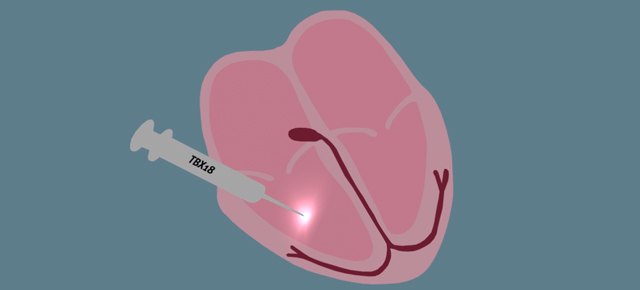Pacemakers are — even at their tiniest — intrusive bits of metal wired into the heart. But now scientists have come up with something completely different: a “biological pacemaker” in a pig made by reprogramming the heart’s own cells with a modified virus carrying a specific gene.
The biological pacemaker is created through gene therapy, a much ballyhooed idea that has yet to make real inroads in medicine. If this technique ends up working in humans, it would be promising direction for gene therapy and an alternative to electronic pacemakers in tiny fetal hearts or cases of bad infection.
To understand how this biological pacemaker works, we have to understand how the heart works. Your heart beat is set by a small clump of pacemaker cells in an area called the sino-atrial node. Other heart cells follow the rhythm of the sino-atrial node. If the sino-atrial node is damaged or disconnected — like in what is called “total heart block” — the heart can only pump weakly.
Scientists took seven pigs with total heart block and injected a small amount of virus carrying the gene TBX-18. The addition of this gene made ordinary heart cells suddenly start beating rhythmically. And they weren’t just beating at a fixed rate either. When the pigs exercised, their heart sped up. When they rested, their hearts slowed down. But this effect was only temporary, lasting about two weeks, and researchers are exploring how to prolong it.
Dr. Eduardo Marbán, one of the senior authors on this study, has been working on this for more than a decade. As early as 2002, he published on TBX-18 converting cells to pacemakers in guineas, and in 2012, a more refined technique was discovered. So guineas pigs to pigs — what’s the big news now? This is actually a big deal because while guinea pigs are convenient lab animals, pigs are actually quite closely related to humans. Pig heart valves are already transplanted into humans, and there’s been talk of transplanting whole pig hearts into humans after a successful pig-to-baboon transplant.
Coming back to the biological pacemaker, the idea of injecting a virus may seem more foreign and dangerous than putting an electronic device in the heart. To some extent, this is true; gene therapy faces plenty of challenges. But viruses already live alongside us and inside us and even inside our genomes: 8 per cent of human DNA is viral in origin. Viruses not just little buggers trying to make us sick — sometimes we can even put them to good use. [Science Translational Medicine via New York Times]
Top image via Science Translational Medicine
